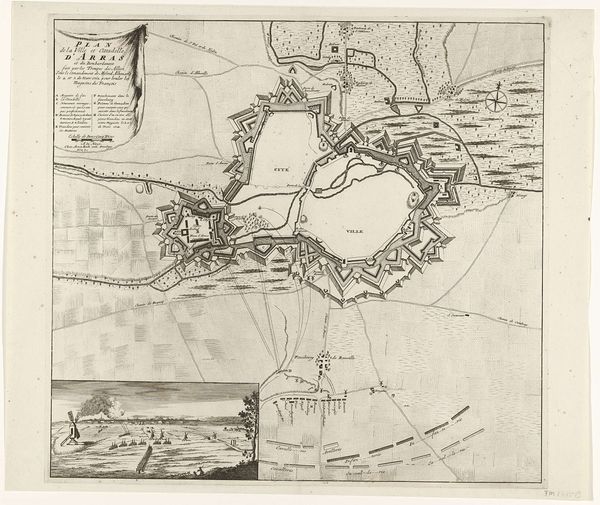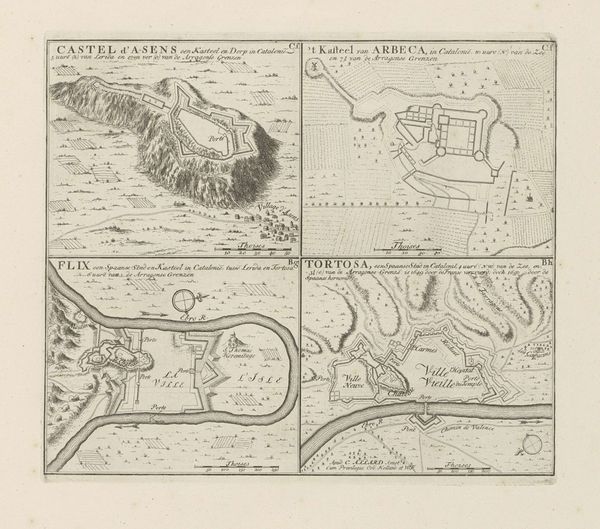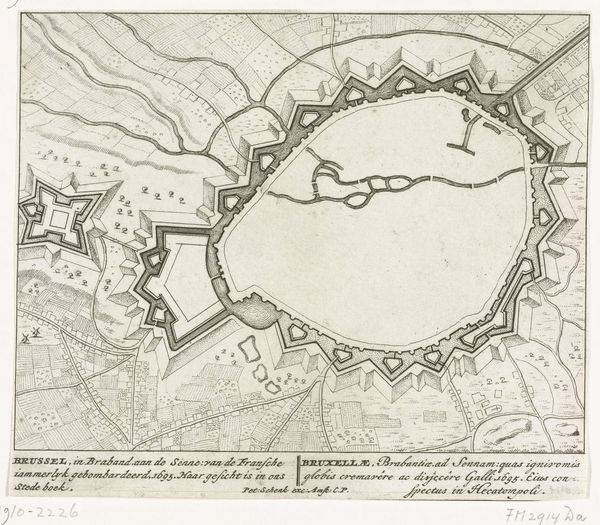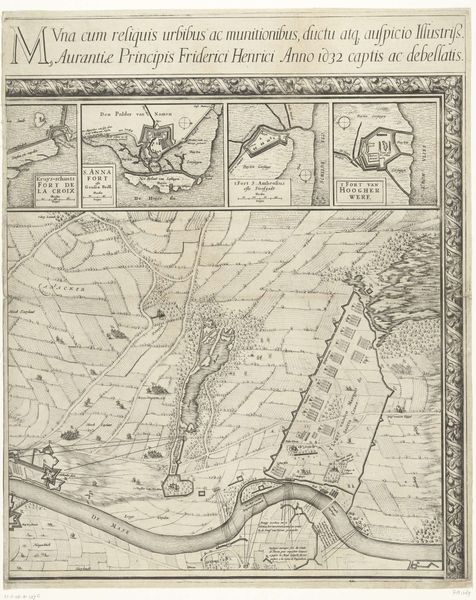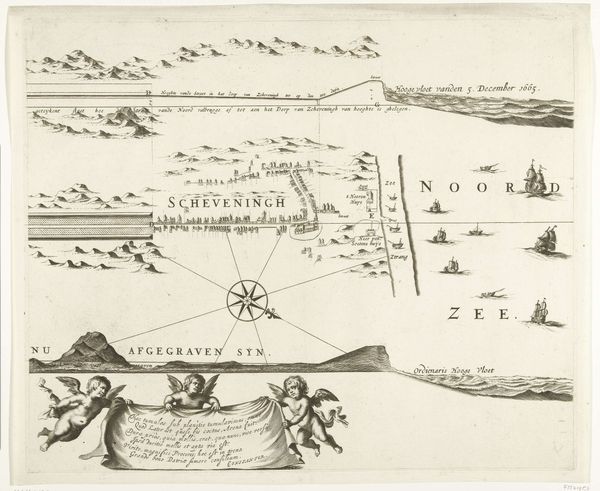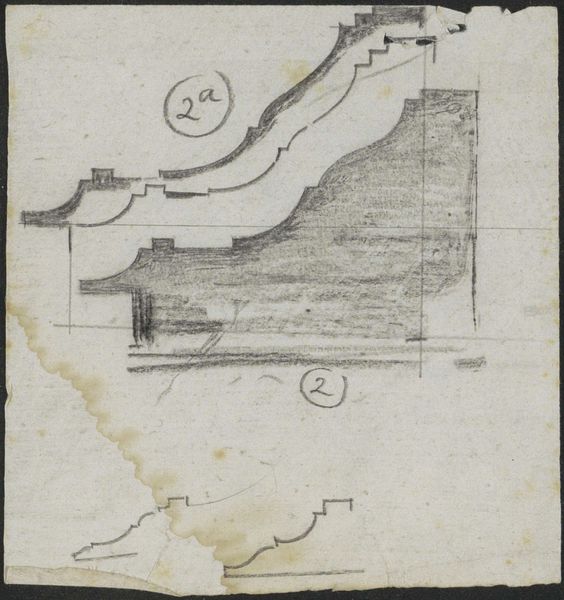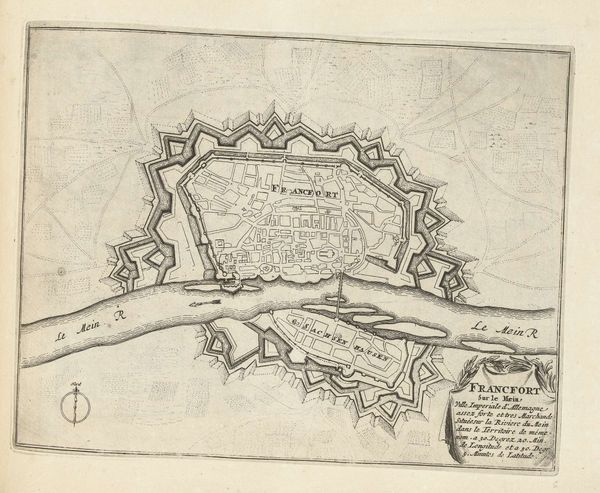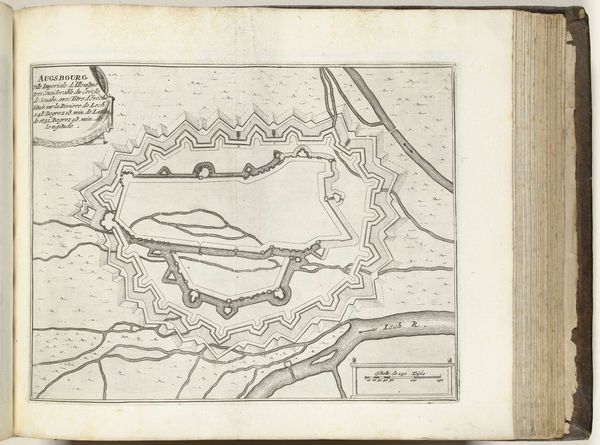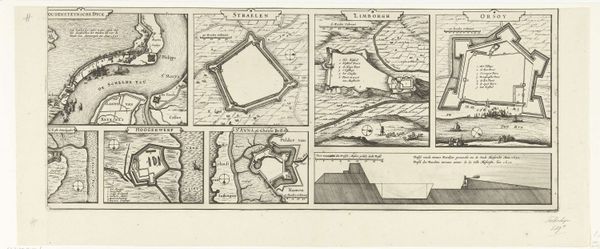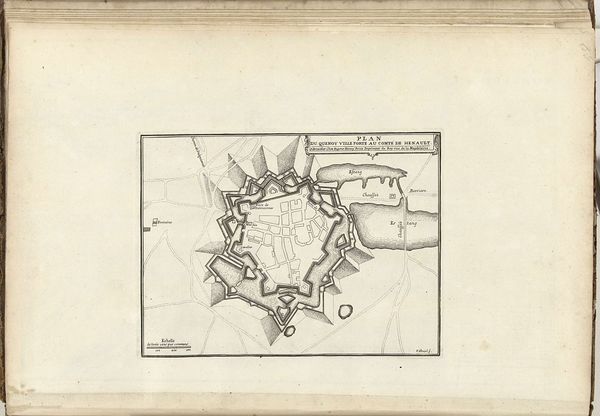
drawing, ink, engraving
#
drawing
#
baroque
#
river
#
ink
#
cityscape
#
engraving
Dimensions: height 335 mm, width 233 mm
Copyright: Rijks Museum: Open Domain
Curator: This print, "Verleggen van een bocht in de Tiber," or "Altering a bend in the Tiber," comes to us from the hand of Giovanni Battista Falda, sometime between 1677 and 1696. It's a striking rendering in ink of, well, the Tiber. What jumps out at you? Editor: Immediately, I'm struck by the implied labor. The intense, almost feverish detail in those lines! It's a planned alteration of the river's course depicted in stages, less like a pastoral scene and more like an engineering proposal, or perhaps a document celebrating civic control over nature itself. Curator: Indeed. The crispness of the engraving almost feels…sterile. Though perhaps, I’m responding to the sheer audacity of re-routing a river. A natural course, reshaped by human will and, inevitably, by human hands. I find it bold, a little terrifying, a statement piece. Editor: Terrifying is interesting. I read it as a form of early urban planning, a literal reshaping of the city's artery. The lines act like threads, tracing the flow of commerce and, of course, waste. Look how the stakes and barriers appear as both physical tools and symbolic markers, dictating the terms of interaction between the city and its environment. It's almost diagrammatic. Curator: Yes, diagrammatic, that's perfect. Like a fever dream of urban rationalism! What it captures for me, beyond the literal landscape, is ambition. Pure, distilled ambition. Someone looked at that river and thought, "I can change this. I *will* change this." Editor: I think it also reveals a very particular mindset, of the Baroque period, of course. The emphasis on grandiose projects, feats of engineering... the relationship between man and his environment cast as one of control rather than cooperation. Curator: It leaves you wondering about the hands that did the digging, the building, the altering. Who benefitted, and who paid the price for this taming of the Tiber? The human cost is glaringly absent in Falda’s fastidious lines. Editor: Precisely! Falda provides a map of the plan but not the implications, the mess. We're left to consider the invisible layers—the labor, the potential ecological fallout—in the making of this bend. It speaks volumes through what it chooses *not* to depict. Curator: Thinking about Falda, with his ink and engraving tools so deftly capturing this grand scheme… It's humbling. A perfect paradox of meticulous art memorializing an equally meticulous act of supposed improvement on nature's own design. Editor: It certainly makes me think about the unseen cost of large-scale manipulation within social and environmental contexts throughout time and right up to our modern moment.
Comments
No comments
Be the first to comment and join the conversation on the ultimate creative platform.

